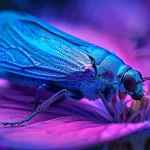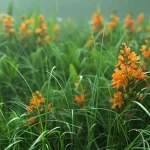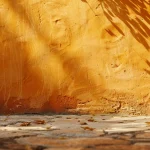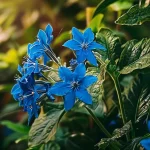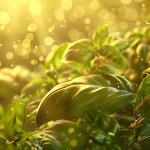The blackthorn, a tough yet mysterious shrub, stands as a symbol of resilience in the natural world. In this post, we’ll peel back the layers of blackthorn‘s rugged bark to reveal its significance, not only in its native habitats like Spain but also in culture and traditional practices. Our journey will illuminate how the blackthorn‘s plum-like fruits have supported both wildlife and human endeavors, along with giving insight into its practical applications for skin remedies and garden cultivation. By engaging with this content, readers will discover how to integrate this plant into their lives, reaping its ecological benefits and deepening their appreciation for an often-overlooked botanical gem.
Understanding the Blackthorn Plant: Characteristics and Identification

As we delve into the world of the blackthorn, Prunus spinosa, understanding its characteristics is essential. The key features to identify this plant include its dark berries and the white blossom that heralds the blackthorn event each spring. I’ll guide you through recognizing its seasonal changes and flowering patterns, providing insights that distinguish blackthorn from similar species, like Prunus cerasifera. Acknowledging the subtleties of its appearance not only assists in identification but reveals its wider ecological significance.
Key Features to Identify Blackthorn
One distinguishing characteristic of the blackthorn is the plant‘s robust, sloe fruit, frequently found across Europe. The dark, purplish-blue berries, which emerge after the flowering of white blossoms, are laden with astringent flavor before the first frost, transitioning to a sweeter taste post-frost. This fruit serves as a key identifier and holds significant ecological value, providing sustenance for various insect species and birds during the autumn months.
Additionally, blackthorn can be identified by its dense, thorny branches, which create a formidable, spiky hedge in many European landscapes. Unlike its relative Crataegus monogyna, commonly known as hawthorn, the blackthorn bears longer, slender spines and its blossoms appear before its leaves, a sequence that distinguishes it during the season of awakening. Recognizing this unique flowering pattern aids in distinguishing blackthorn from other similar flora.
Furthermore, a keen observer will note the resilience of the blackthorn during harsh frosts, a trait not shared by all vegetation. Its blossoms are hardy enough to withstand sudden cold spells in early spring, ensuring successful pollination and fruit set. This attribute not only signifies the plant’s robustness but also underscores its role in the ecosystem, supporting early emerging insects with a vital source of nectar and pollen when few other plants are in flower.
Seasonal Changes and Flowering Patterns
In my experience, the blackthorn tree is a master of adaptation, reflecting the essence of the changing seasons in its growth cycle. During early spring, prior to the development of its leaves, the blackthorn shrub is adorned with an abundance of white blossoms. The flowers serve as a crucial beacon for pollinators, emerging at a time when food sources are scarce, leading to the production of small, sour fruits, which gradually mature as the seasons progress.
Advancing into summer, the robust leaves of the blackthorn fully emerge, forming a dense canopy that shelters the developing sloe berries. This seasonal transformation is not only visually striking but functionally wise; the thick leaf coverage conserves moisture and provides cover for birds and insects alike. As a keen gardener, I value the encyclopedia of visual cues I gain from observing these changes, from the glossy, green leaf formation to the juice-laden sloe berries ready for harvest come autumn.
When autumn descends, the landscape takes on a richer palette as the blackthorn tree prepares for dormancy. The leaves, once a vibrant green, shift to golden hues before falling away, revealing the dark, ripe sloe berries. These fruits, now softened by the chill, are perfect for foraging and lend themselves to a variety of culinary uses. Observing the blackthorn‘s seasonal ballet instills a profound appreciation for nature’s rhythms and the nuanced life cycle of this enduring shrub.
Distinguishing Blackthorn From Similar Species
In my observations, distinguishing blackthorn from companion woodland species requires attention to specific details, particularly during flowering periods. Unlike the early blooms of blackthorn, the cherry – a flowering plant often confused with blackthorn – reveals its blossoms only after leafing out. This natural sequence is a reliable indicator for identification and helps to prevent the misclassification of these two similarly flowering plants within their shared habitats.
Novices and experts alike might also note the wood of the blackthorn, which is renowned for its hardness and durability, setting it apart from other hedgerow vegetation. This quality wood is traditionally sought after for crafting walking sticks and can be an unexpected guide to distinguishing plants. When I explore hedgerows, I inspect the toughness and texture of the wood, using this tactile experience to confirm a specimen’s true identity beyond its surface appearance.
Finally, the use of blackthorn in creating a dense, impenetrable hedge holds both practical and ecological advantages, another facet that differentiates it from other shrubs. Its propensity for forming a thorny barrier is not only a distinguishing characteristic but also offers me insights into land management practices and the selection of appropriate species for desired outcomes. By understanding the ability of blackthorn to serve such dual purposes, I can better appreciate its unique placement in the world of flora.
Now that we’ve grasped the rugged essence of the blackthorn plant, let’s tread into its domain. We venture next into the wild thickets and windswept hills where the blackthorn claims its ground.
The Natural Habitat and Distribution of Blackthorn

In my study of the blackthorn plant, I’ve found it thrives across various regions, particularly within the United Kingdom, where it’s an integral part of hedgerows and woodlands. As a member of the Rosaceae family, it has specific soil and climate preferences, favoring well-drained soil and cooler conditions. The demanding nature of blackthorn, fabled for its use in the craft of shillelagh and the cherished sloe gin, supports a range of moth species, thereby solidifying its ecological role. The forthcoming sections will delve deeper into the ways blackthorn adapts to its environment and the multitude of uses it presents to both nature and humans.
Regions Where Blackthorn Thrives
In my explorations, I have observed that the blackthorn, or Prunus spinosa, exhibits remarkable adaptability within different regions. Among the most optimal environments for its growth are the temperate zones of Europe, where the climate and soil conditions align perfectly with the needs of this resilient species. Its predilection for well-drained soil makes it a frequent sight in the UK’s hedgerows, where it contributes to the biodiversity and the structural integrity of the landscape.
The hardy nature of blackthorn allows it to flourish beyond Europe, even reaching the altitudes of Bolivia. Here, despite the stark contrast in topography and climate, Prunus spinosa demonstrates its exceptional versatility. The resilience of this species in such varied environments speaks to its robust ecological value, and it is in these autumn months that the plant‘s sloe berries ripen, eventually lending their unique flavor to the traditional sloe gin savored worldwide.
My experience with blackthorn has also revealed its particular affinity for autumn, a time when the plant‘s energy concentrates in the ripening of its sloe berries. These berries, a cornerstone for the cherished gin made from their essence, are highly anticipated for their culinary applications. An understanding of the regions where blackthorn thrives informs both harvest practices and habitat conservation efforts, ensuring this plant continues to enrich our landscape and our palates.
Soil and Climate Preferences
In my years of cultivating gardens, I’ve learned that the blackthorn, or Prunus spinosa, has specific preferences that ensure its thriving presence. It favors well-drained, limestone-rich grounds, which are quite common in areas where it grows naturally. I’ve found through careful observation that in such soils, the blackthorn‘s seed takes root more successfully, linking the quality of the habitat directly to the plant’s robustness and the biodiversity it supports, including the brown hairstreak butterfly.
Climate plays a pivotal role in the development of blackthorn. This hardy shrub prospers in temperate zones, showcasing an impressive resilience to cold. Indeed, Prunus spinosa withstands frosts that can harm other, less hardy plants. I’ve seen the blossoms endure the chill of early spring, safeguarding the continuation of the species and ensuring an autumn bounty of sloe berries for wildlife and for uses such as wine-making.
When I engage with fellow enthusiasts seeking to introduce blackthorn into their own gardens, I emphasize the importance of mimicking its natural conditions as closely as possible. It’s in these carefully managed environments that I’ve witnessed an increase in the survival rate of seeds and young plants. This adaptation to garden settings not only garners a beautiful aesthetic but also contributes to ecological conservation efforts, extending the benefits of this species well beyond its natural habitat.
Blackthorn's Role in Hedgerows and Woodlands
In my experience with blackthorn, its prevalence in hedgerows is not merely a matter of tradition but a testament to its ecological importance. The dense, thorny growth effectively delineates agricultural land, providing both boundary and a secure habitat for wildlife. These living barriers, which commonly include the Crataegus species, are crucial for maintaining the integrity and biodiversity of rural landscapes across the United Kingdom and other parts of Europe.
I’ve witnessed the way blackthorn, entrenched in woodlands, offers nesting sites and protective cover for birds, with its spiny branches deterring predators. As a versatile plant, it fosters an environment where ecosystems can flourish, contributing to a complex habitat mosaic that supports varied species, including the elusive dormouse and numerous beneficial insects.
My close study of these ecosystems has reinforced the value of blackthorn in woodland understories. It acts as a pioneer species, quickly colonizing open ground, which helps stabilize the soil and pave the way for the succession of other woodland flora. Its early blooming pattern is also of tremendous benefit, providing a critical source of nectar and pollen for bees and other pollinators when other food sources are scarce.
The blackthorn thrives, rooted deeply across varied landscapes. In its enduring presence, it shapes life around it, fulfilling a role we shall now examine.
The Ecological Role of Blackthorn in Wildlife

In my observations, the ecological role of blackthorn is extensive, significantly impacting wildlife and biodiversity. Its dense thickets offer sanctuary and sustenance for local bird populations, as well as a haven for various insect and butterfly species. Each aspect of blackthorn contributes to the rich tapestry of biodiversity, sustaining a balance in the ecosystems where it thrives. I will delve into how this humble shrub supports avian life, serves as a lifeline for insects, including vital pollinators, and overall enhances the environments it inhabits.
Supporting Local Bird Populations
In my studies of blackthorn and its ecological impact, I’ve come to appreciate its integral role in supporting local bird populations. Birds such as thrushes, blackbirds, and finches depend on the blackthorn‘s dense thickets for protection from predators. The impenetrable nature of these thickets offers birds a secure environment to nest and raise their young undisturbed.
The autumn season highlights another vital contribution of the blackthorn to avian life: its berries. Post-frost, the softened sloe berries become an invaluable food source for birds. My observations indicate that these berries are not just a seasonal feast but a crucial sustenance for birds as other food sources become scarce.
From my hands-on experience in managing hedgerows, I’ve learned that blackthorn plays an essential role in the lifecycle of many bird species, offering more than just seasonal sustenance. By conserving blackthorn hedges, I am effectively supporting pathways for bird migration and promoting genetic diversity within bird populations as they travel and intermingle across hedgerow-connected landscapes.
Importance for Insect and Butterfly Species
Within the thorny embrace of blackthorn hedges, I have observed an impressive diversity of insect life, highlighting its ecological importance. These shrubs blossom in early spring, a period when sustenance for insects is scarce, thus the blackthorn‘s abundant nectar and pollen provide a critical resource for early-emerging bees and other pollinators. My engagement with conservation efforts has reinforced the notion that these plants are vital for maintaining healthy insect populations, which, in turn, support broader ecological stability.
In my years tending to natural habitats, I’ve noticed that blackthorn serves as an essential host for several butterfly species, including the brown hairstreak. The female of this species, which is notoriously elusive, lays her eggs on the blackthorn‘s young shoots. Safeguarding these plants has allowed me to contribute to the conservation of this butterfly, emphasizing their intertwined existence and the role of Prunus spinosa as a keystone in their life cycle.
My purposeful walks through woodlands often reveal a myriad of articulately spun webs draped amongst blackthorn‘s branches. These serve as testimony to the shelter this shrub provides for various spider species, integral to the balance of the ecosystem as they predate on numerous insect pests. This often unnoticed aspect of the blackthorn underscores its significance far beyond merely a protective barrier or ornamental plant, embedding it deeply within the fabric of local biodiversity.
Blackthorn's Contribution to Biodiversity
In my examination of blackthorn‘s significance, I’ve observed its unique contribution to biodiversity. Its flowers and fruits provide nectar and food for a wide array of species, establishing a foundation for the survival of bees, butterflies, and birds. This interaction not only sustains individual species but also upholds the health of entire ecosystems, illustrating Prunus spinosa’s role as an anchor species within its natural environment.
Through my hands-on efforts in habitat management, I’ve witnessed how blackthorn hedges foster a natural corridor that facilitates the movement and genetic exchange of wildlife. Notably, these thorny barriers link disparate landscapes, allowing organisms to migrate and interact, bolstering the resilience and richness of ecological communities.
My work with blackthorn has also illuminated its indirect influence in sustaining soil health. By stabilizing the soil structure and preventing erosion with its intricate root system, blackthorn supports an underground network of organisms. These in turn enrich the soil and make it more hospitable for plant diversity, revealing the plant‘s crucial role beneath the surface, pivotal to the vitality of the habitat at large.
The blackthorn, steadfast in hedgerows, sustains the birds and bees. Beyond its wild duties, this thorny shrub shares a history with us – from walking sticks to sloe gin, let us uncover its human ties.
Traditional and Modern Uses of Blackthorn

Exploring the multi-faceted applications of blackthorn, I uncover traditional and contemporary uses that extend far beyond its presence in the wild. Prominent in culinary circles, blackthorn‘s sloe berries are transformed into delightful sloe gin and homemade jams, harnessing its unique flavors. Medicinally, the plant‘s properties are tapped for natural remedies. The exceptional durability of blackthorn wood makes it ideal for crafting sturdy walking sticks and tools. Additionally, its application in natural dyeing and crafts exemplifies the creative uses of this resourceful shrub. Each subsequent section will detail these practical applications, imparting knowledge that accentuates the value of embracing the versatility of the blackthorn.
Culinary Uses: Making Sloe Gin and Jams
My experience making sloe gin is a testament to the versatility of the blackthorn berry. After harvesting the ripe sloes post-frost, when they’re at their sweetest, I steep them in gin with sugar, allowing the mixture to mature over several months. The result is a rich, ruby-colored liqueur with a deep, tart sweetness, distinguished by its unique blackthorn profile.
The culinary journey with blackthorn extends to crafting homemade jams, a delightful way to preserve the essence of the berries. Cooking down the sloes with sugar unveils their hidden, complex flavors, resulting in a preserve that is both tart and sweet, perfect for spreading on toast or enhancing desserts. My personal tip is to ensure the seeds are removed, which can otherwise impart a bitter taste to the jam.
I’ve observed an increased interest in locally-sourced ingredients, and blackthorn berries offer a natural bounty for these culinary pursuits. Sharing recipes and techniques for sloe gin and jams not only fosters community connections but preserves traditional practices that are rooted in our cultural heritage. Each batch I prepare is a celebration of the remarkable flavors that nature provides through the versatile blackthorn shrub.
Medicinal Properties and Remedies
In my experience working with plant-based remedies, blackthorn has been valued for its medicinal properties, particularly the astringent benefits of its berries and bark. This astringency makes blackthorn a potential choice for natural throat soothers and digestive aids, addressing the discomfort associated with inflamed mucous membranes and diarrhea. I’ve seen these parts of the plant used in decoctions, delivering relief in a natural and traditional manner.
I’ve also noted the use of blackthorn flowers in holistic practices, where they are infused to create soothing teas. The infusions serve as mild diuretics, promoting kidney health, and offering subtle support for urinary tract functions. My careful preparation of these infusions reflects the necessity to utilize natural resources without harsh additives, ensuring the resulting remedy is gentle and free of unwanted compounds.
Through my detailed study of ethnobotany, it has become clear that the leaves and buds of the blackthorn, harvested in their early stages, harbor potential antioxidative properties. These parts of the plant could contribute to a regimen aimed at reducing oxidative stress, though it’s crucial to note that their medicinal applications should be approached with caution, understanding, and respect for their potency and historical context.
Crafting Walking Sticks and Tools From Blackthorn Wood
Through my experience with woodworking, I’ve discovered that blackthorn wood‘s remarkable hardness and density make it an excellent material for crafting walking sticks and traditional tools. The fine grain of the wood, coupled with its innate strength, ensures that products like walking sticks are not only visually striking but also durable and capable of withstanding years of use.
I have personally fashioned walking sticks from blackthorn and found that their resilience allows for a fine, polished finish, enhancing their aesthetic while maintaining a natural grip that is much appreciated by hikers and walkers. Each piece, unique in its contours and hues, speaks to the inherent beauty and practicality of blackthorn wood, making these items cherished possessions.
In creating tools from blackthorn wood, I pay attention to the precise shaping and balance required for each item. Whether carving a handle for a garden tool or a mallet for carpentry, the robustness of the wood guarantees a tool that not only fits comfortably in the hand but also performs impeccably, testifying to blackthorn‘s suitability for both artisanal and practical applications.
Blackthorn in Natural Dyeing and Crafts
In my explorations of blackthorn‘s versatility, I’ve found its application in natural dyeing to be particularly fascinating. The bark and berries of blackthorn, which I have personally experimented with, can yield a range of hues from soft blues to rich purples, making them ideal for textile artists and hobbyists seeking natural dye options. This practice not only resonates with those passionate about sustainable crafts but also revives traditional dyeing methods whose rustic charm is unmatched by synthetic alternatives.
Through crafting blackthorn wood, I’ve unearthed diverse potential in its branches and twigs. These can be intricately carved or woven into baskets, providing a sustainable source of crafting material. My personal experience creating such art has shown me that the strength and pliability of blackthorn wood infuse each creation with a sense of rustic durability and an aesthetic deeply rooted in nature’s simplicity.
Further delving into the crafts aspect, blackthorn spines and sloe berries offer themselves as unique elements in jewelry making, which I’ve seen add an authentic, earthy touch to bespoke accessories. The natural sharpness and durability of the thorns are qualities that I’ve carefully harnessed, transforming what many merely consider a shrub into an emblem of natural beauty and creativity evident in handcrafted pieces.
Blackthorn, both tool and talisman, bridges the practical to the mystical. It whispers tales of old, woven into the fabric of cultures, ripe for discovery.
Blackthorn in Folklore and Cultural Significance

Exploring the folklore and cultural resonance of blackthorn unveils a tapestry woven with myths and legends. In different cultures, this plant takes center stage in symbols and rituals, deeply rooted in tradition. My journey through the blackthorn‘s presence in literature and art reveals its impactful narrative and aesthetic significance. Each following section will uncover these engrossing facets, demonstrating their enduring influence and the timeless allure of blackthorn in cultural expression.
Myths and Legends Surrounding Blackthorn
Immersing myself in the folklore surrounding blackthorn, I’ve discovered its association with protection and misfortune. This dichotomy appears in traditions where a blackthorn branch outside a home was believed to ward off evil, an insight I find reflects the plant‘s own protective spiny thickets.
In my investigations of cultural history, I have noted that blackthorn often symbolizes the strength to persevere through hardship. This is personified in stories where heroes wield blackthorn walking sticks, known as shillelaghs, emblematic of resilience and hardiness, qualities deeply ingrained in the identity of the plant itself.
Reflecting on my experiences with local narratives, I understand that blackthorn holds a place in the celebration of seasonal cycles. Its white blossoms signaling the arrival of spring are steeped in the mythology of rebirth, highlighting a natural cadence that has been honored by various cultures in art and literature throughout the centuries.
Symbols and Rituals in Different Cultures
In different cultures, blackthorn carries rich symbolic weight; it is often intertwined with rituals that mark significant transitions or protect against the unknown. Particularly in Celtic traditions, I have observed that the plant is used during Samhain, a festival heralding the beginning of the darker half of the year, symbolizing the delicate balance between light and darkness, life and death.
My exploration has revealed that in some regions, blackthorn wood is selected for crafting the traditional cudgel, the shillelagh, which is not only a symbol of national heritage but also serves a practical role in festivals and rituals. The strength and resilience of blackthorn wood are celebrated in these objects, and handling one has offered me a tangible connection to those cultural narratives and practices.
From a personal standpoint, engaging with the practices surrounding blackthorn during seasonal festivals has taught me a great deal about its place in community bonding and collective memory. For instance, I’ve seen how sharing sloe gin, made from blackthorn berries, has become a ritual in itself, fostering unity and continuity in cultures that value the passing on of traditional methods and recipes.
Blackthorn in Literature and Art
Through my in-depth exploration of blackthorn‘s role in culture, I’ve learned it frequently graces the pages of literature as a symbol of duality – offering protection yet signifying strife. Writers often depict its stark, thorny branches and delicate blossoms to convey characters’ complex emotional landscapes. This shrub‘s dramatic presence provides a backdrop in many narratives, resonating with readers due to its deep-seated connections to human experience and natural cycles.
In my engagements with the artistic community, I’ve seen blackthorn featured in diverse artworks, from detailed botanical illustrations to abstract representations. Artists capture the plant‘s intricate dance between beauty and ruggedness, a reminder of nature’s dual aspects. The blackthorn inspires creativity, its spikey form and rich berries offering a visual feast that has captivated the imagination within various art forms throughout history.
Delving into the tactile world of crafts, my personal experiences include working with blackthorn in woodworking and dyeing projects. Its enduring impact in art extends beyond visual representation, influencing artisan practices and folk art. The plant’s durable wood and vibrant berries provide materials that translate the essence of the landscape into functional and ornamental items, affirming blackthorn‘s significant yet understated role in our cultural heritage.
The blackthorn casts long shadows in lore, its thorns lacing tales and traditions. Today, these same branches offer a more tangible reward, should we plant and tend them wisely in our gardens.
Cultivating Blackthorn: Tips for Growing in Your Garden

In my professional gardening experience, I’ve come to understand the intricacies of cultivating blackthorn in a garden setting. This section will guide you through planting and propagation, outlining methods suited to this hardy shrub. We’ll look into pruning and maintenance guidelines vital for healthy growth, tackle common pests and diseases to keep your blackthorn thriving, and discuss integrating blackthorn into your garden design to enhance its natural beauty and ecological benefits. Each topic is designed to empower you with the knowledge to successfully grow blackthorn, contributing to both biodiversity and the charm of your outdoor space.
Planting and Propagation Methods
Embarking on the cultivation of blackthorn begins with understanding its preference for well-drained soil and partial to full sun exposure. In my professional gardening ventures, I’ve learned that planting bare-root blackthorn during dormancy—typically from late autumn to early spring—gives it a strong start. By ensuring the soil is augmented with organic matter, I’ve observed improved root development and overall vigor in young plants.
Propagation of blackthorn is a rewarding endeavor with several effective techniques. I’ve had success with hardwood cuttings taken in winter; by selecting robust, mature stems and planting them into a prepared bed, I’ve fostered new growth come spring. It’s equally important to maintain moderate moisture in the soil, as my experience has demonstrated that too much water can be detrimental to cutting establishment.
My approach to propagating blackthorn from seed involves stratification, which simulates winter conditions to break dormancy. I’ve found that sowing stratified seeds in early spring under a light layer of soil leads to optimal germination. I pay close attention to young saplings, ensuring they’re shielded from harsh elements and competition, which greatly increases their chances of flourishing in a garden setting.
Pruning and Maintenance Guidelines
In my professional practice, I’ve found pruning blackthorn is best undertaken during the dormant season to promote vigorous spring growth. Trimming out dead or diseased branches not only maintains the shrub‘s health but also shapes its growth, keeping it dense and manageable. It’s crucial to make clean cuts just above new buds to ensure optimal healing and prevent disease entry points.
Regular maintenance of blackthorn includes checking for pests and signs of disease. I vigilantly inspect for leaf spots and caterpillars, common issues for Prunus spinosa, and apply organic remedies as needed. Proper upkeep, through timely interventions, ensures the longevity and flourishing of these plants in your garden, safeguarding their aesthetic appeal and ecological contributions.
I advise gardeners to mulch around the base of blackthorn plants to conserve soil moisture and suppress weed growth, a technique I’ve relied on to support the shrub‘s robust development. This simple practice, done annually, enriches the soil while reducing maintenance efforts, creating a favorable environment for your blackthorn to thrive.
Managing Blackthorn Pests and Diseases
In my gardening practice, I’ve encountered blackthorn pests such as aphids and sawflies, which can undermine the plant‘s health. To manage these infestations, I apply neem oil or encourage natural predators like ladybirds into the garden. This eco-friendly approach aligns with sustainable gardening principles and supports the overall equilibrium of the garden ecosystem.
When it comes to diseases, blackthorn can suffer from fungal issues such as leaf curl and silver leaf disease. In my experience, preventative measures like ensuring proper air circulation and avoiding overhead watering reduce the risk of fungal infections. If diseases are identified, I promptly prune and destroy affected parts to arrest the spread and safeguard the plant‘s vitality.
Encountering root rot in blackthorn is less common, but it can occur in poorly drained soils. To avert this, I’ve learned to plant blackthorn in raised beds or to amend soil with organic materials to enhance drainage. Monitoring soil moisture levels is key; I aim for consistency to promote robust plant health without inducing waterlogged conditions conducive to root diseases.
Integrating Blackthorn Into Garden Design
In my professional experience as a gardener, the integration of blackthorn into garden design can add both aesthetic appeal and ecological function to your outdoor space. Strategically positioning blackthorn shrubs as a natural border or hedge not only enhances privacy but also teems with added wildlife value. These plants effortlessly craft a wilder, more rustic feel, propelling your garden‘s design towards a balance of form and function.
When planning the garden layout, I recommend using blackthorn in areas that could benefit from its dense, thorny branches. This could effectively deter unwelcome visitors or ward off strong winds, protecting more delicate plants. Its striking white blossoms set against the dark foliage create a dramatic visual impact during springtime, making blackthorn an architecturally robust and stunning feature in the overall garden design.
Using my insights as a horticulturist, I advocate defining spaces within your garden with the use of blackthorn. Its capacity to form a dense, living barrier means that singular areas dedicated to relaxation, vegetable patches, or play can be naturally sectioned off, enhancing the usability of the space while contributing to local biodiversity through the addition of this native species.
Conclusion
Blackthorn, with its resilience and rich berries, plays a pivotal role in ecosystem conservation and provides essential sustenance to birds and insects, boosting biodiversity. Its traditional uses, from crafting robust walking sticks to the culinary delights of sloe gin, showcase its versatility and cultural heritage. Cultivating blackthorn adds ecological value and aesthetic appeal to gardens, while its dense thickets and stunning spring blossoms enrich the landscape. Acknowledging blackthorn’s significance encourages its integration into habitats and highlights its indispensable contributions to wildlife, craft, and tradition.






